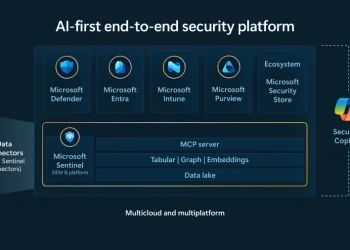Chinese robotaxi operator Pony AI has secured a driverless robotaxi permit for operations in Shanghai. Consequently, the company announced Saturday that it can now provide fully autonomous commercial services. Moreover, this driverless robotaxi permit marks a significant milestone for autonomous vehicle deployment in China.
Specifically, Pony AI will operate in Shanghai’s Pudong financial district. Therefore, the company received authorization for fully driverless commercial robotaxi services. Additionally, this driverless robotaxi permit allows expansion beyond testing phases. Nevertheless, the initial focus remains on the core business district.
The company plans to launch fully driverless ride-hailing services systematically. Furthermore, operations will begin in Jinqiao and Huamu districts. Meanwhile, these areas represent Shanghai’s core business zones. Specifically, the driverless robotaxi permit enables service in high-demand commercial areas.
Pony AI intends to expand services to other Shanghai regions gradually. Moreover, the initial driverless robotaxi permit covers the Pudong financial district specifically. However, future expansions may follow successful implementation. Consequently, the company takes a measured approach to autonomous vehicle deployment.
This development represents progress for China’s autonomous vehicle industry. Specifically, the driverless robotaxi permit demonstrates regulatory acceptance of fully autonomous technology. Furthermore, Shanghai’s approval shows government support for innovation in transportation. Nevertheless, safety standards and testing requirements remain stringent.
Pony AI’s achievement distinguishes it among Chinese autonomous vehicle companies. Moreover, the driverless robotaxi permit allows commercial operations without human drivers. Additionally, this contrasts with many competitors still requiring safety operators. However, the company must maintain strict safety protocols.
The permit covers commercial robotaxi services exclusively. Specifically, customers can hail fully autonomous vehicles through ride-hailing apps. Furthermore, no human drivers will operate the vehicles during service. Meanwhile, remote monitoring systems ensure safety oversight.
Shanghai’s Pudong district presents ideal conditions for robotaxi deployment. Specifically, the financial district has modern infrastructure and clear traffic patterns. Moreover, the driverless robotaxi permit targets areas with high technology adoption rates. Nevertheless, urban complexity requires advanced autonomous capabilities.
The company’s statement emphasized gradual expansion plans. Furthermore, starting in core business districts reduces operational risks. Additionally, Jinqiao and Huamu areas provide controlled environments for testing. However, the driverless robotaxi permit allows for future geographic expansion.
Regulatory approval required extensive safety demonstrations. Specifically, Pony AI had to prove vehicle reliability under various conditions. Moreover, the driverless robotaxi permit reflects confidence in the company’s technology. Nevertheless, ongoing compliance monitoring continues post-approval.
Commercial operations represent the final stage of autonomous vehicle development. Furthermore, the driverless robotaxi permit enables revenue generation from autonomous services. Additionally, this milestone validates years of research and development investment. However, public acceptance remains crucial for long-term success.
China’s autonomous vehicle regulations have evolved to support innovation. Specifically, the driverless robotaxi permit system balances safety with technological advancement. Moreover, Shanghai leads Chinese cities in autonomous vehicle adoption. Nevertheless, strict oversight ensures public safety standards.
The permit issuance follows successful testing phases in multiple cities. Furthermore, Pony AI has operated with safety drivers in various Chinese markets. Additionally, the driverless robotaxi permit represents regulatory confidence in proven technology. However, commercial operations face different challenges than testing.
Public transportation benefits from autonomous vehicle integration. Specifically, the driverless robotaxi permit expands mobility options in urban areas. Moreover, reduced labor costs could lower ride-hailing prices eventually. Nevertheless, safety remains the primary concern for regulators and passengers.
Technology improvements enable fully autonomous operations. Furthermore, advanced sensors and artificial intelligence power driverless capabilities. Additionally, the driverless robotaxi permit acknowledges technological maturity. However, continuous updates and maintenance remain essential.
Competition in China’s autonomous vehicle market intensifies. Specifically, other companies seek similar driverless robotaxi permit approvals. Moreover, international competitors watch Chinese regulatory developments closely. Nevertheless, Pony AI’s early approval provides competitive advantages.
Economic implications extend beyond the company itself. Furthermore, the driverless robotaxi permit supports Shanghai’s smart city initiatives. Additionally, autonomous transportation creates new business opportunities. However, traditional taxi drivers may face displacement concerns.
Future expansion depends on successful initial operations. Specifically, the driverless robotaxi permit allows growth to other districts eventually. Moreover, positive user experiences encourage broader adoption. Nevertheless, any incidents could delay further expansion plans.
In conclusion, Pony AI’s driverless robotaxi permit represents significant progress for autonomous transportation. The approval enables commercial operations in Shanghai’s financial district. Moreover, this milestone demonstrates regulatory confidence in autonomous technology. Consequently, the development advances China’s position in the global autonomous vehicle race.














